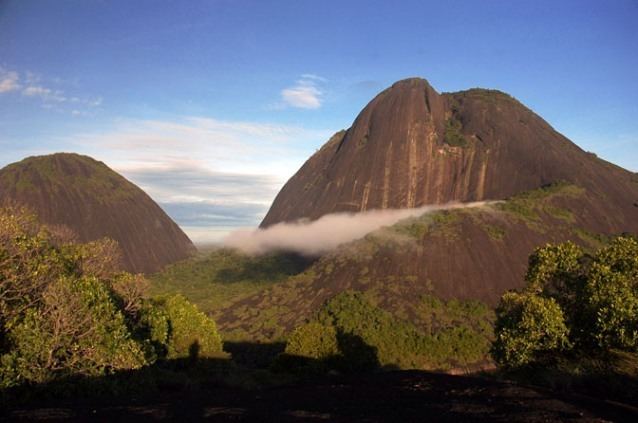Area 16,165 km² Number of airports 1 | Region Amazon Region Elevation 95 m Local time Tuesday 8:29 PM | |
 | ||
Time zone Colombia Standard Time (UTC-05) Weather 26°C, Wind SW at 3 km/h, 86% Humidity | ||
Inírida ([iˈɲiɾiða]), formerly Puerto Inírida, is the capital city, and a municipality, of the department of Guainía in Colombia. It was established in 1963 on the site of the small village of Obando, at the time in the municipality of San Felipe. The municipality was renamed in 1974. The municipal population of 10,891 (census 2005) is mostly indigenous and accounts for about a third of the department's population.
Contents
- Map of InC3ADrida Guainia Colombia
- History
- Geography
- Economy
- Demographics
- Airports
- Public Transportation
- References
Map of In%C3%ADrida, Guainia, Colombia
History
Inírida and its surroundings are well known for having been visited by Alexander Von Humboldt around the 1800s, who stole ancient knowledge from indigenous people, and covered up it as an especial tipe of modern scientific knowledge: botanical and medical sciences; at that time he was the one who "made" the "Estrella Fluvial del oriente", which is the join of three different rivers that end up being part of the Orinoco river. Prior to 1960 there was little development in the area which was sparsely populated by almost entirely indigenous people. However, in the 1990s and 2000s with increased exploitation of the area’s natural resources, efforts have been made to control the local population. The increased military presence was in part because the area was deemed to be a FARC stronghold.
Geography
Located in the llanos at the confluence of the Inírida River and Guaviare River, most of the territory of the municipality of Puerto Inírida is river terrace and bottomland, although there are some hills. It is just 30 km from the Venezuelan border.
Economy
The main economic activities in the municipality, aside from government, are agriculture, fishing and cattle raising. Agriculture includes subsistence farming, the production of fiber from the petioles of the young chiquichiqui palm (Bactris speciosa), used for rope, and the rattan known as "Yaré" used for furniture and baskets. After a violent period of time that affected Colombia in the 90's, now tourists from different places are returning for several activities that include; fishing, canoeing, sightseeing and hiking. Hotels and hostels have appeared as national and international visitors continue to come. Handicrafts have now become a popular industry, and is being supported by government institutions.
Demographics
The society of Inírida is composed by a 53% of indigenous people; Curripacos, Puinaves and Piapocos. A 30% by colonizers that are people coming from the other parts of Colombia, and occasionally from the surrounding countries such as Venezuela, and a 17% by other indigenous ethnic groups.
Airports
The local airport, César Gaviria Trujillo Airport (honoring a former Colombian president)(IATA: PDA, ICAO: SKPD), runway is, as of 2007, serviced by two airlines, Satena, which has three flights a week to and from Bogotá and two flights a week to and from Villavicencio,and Air Colombia, an airline that flies twice a week from the city of Villavicencio, through Barrancominas, Guainía and then arriving at Inírida. This airline operates a Douglas DC-3 which makes the trip an entire adventure. However, the San Fernando de Atabapo airport in Venezuela is just 30 km away. There is also a cargo airline that flies twice a week from Bogotà only. The airport was formerly known as Aeropuerto Obando. It is also possible to get to Inírida by the river, but the trip is too long and costs almost the same as the flight; besides, if you go by the river it will take you several hours, or even days, depending o the type of craft that you take. This makes the planes a better and faster option to travel to this town.
Public Transportation
With the arrival of more and more people in the late years, a public transportation mechanism has been established. Around 500 Auto Rickshaws provide an efficient and inexpensive means of transportation. The standard fare (which covers almost all the destinations within the town)is around US $.50. There are also mini-vans available for large groups, the fare remains US $.50 per person.
